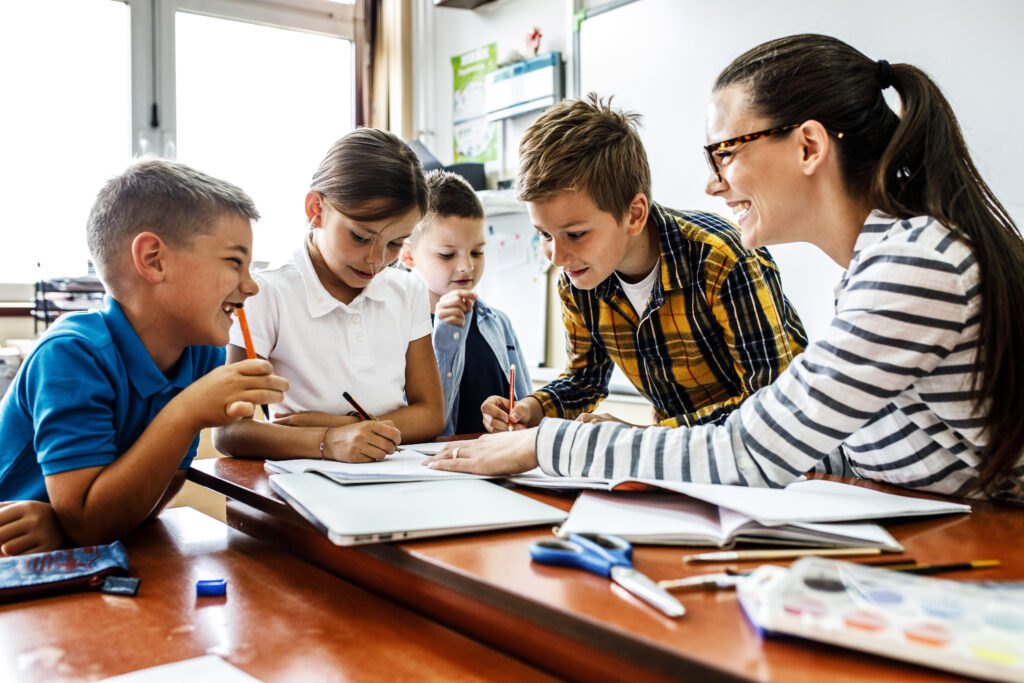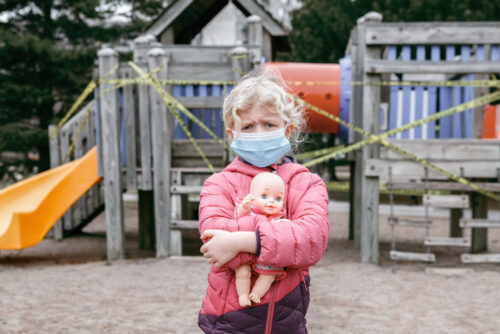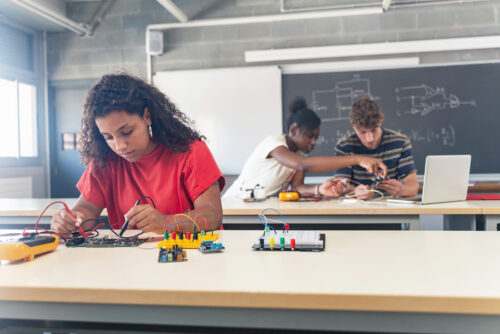Post-pandemic K-12 philanthropy should focus on families and communities.
When the Covid-19 pandemic disruptions to K-12 schooling took an extraordinary toll on students and their parents, K-12 philanthropy responded. A range of efforts—from shifting project-specific grants to general operating funds to grants for computer equipment and connectivity and food, shelter, and school safety—have strived to remedy the losses and dislocations families experienced. What happens to philanthropy as we move into the post-pandemic phase?
We’re now entering a new phase of Covid-19—what former Food and Drug Commissioner Dr. Scott Gottlieb describes as the transition from “an omnipresent virus into a manageable risk.” So as the pandemic becomes endemic, a new question arises: How should K-12 Philanthropy adapt to best respond to the landscape that Covid disruptions have left behind?
With this question in mind, I want to direct your attention to two major effects of the pandemic on education which ought to inform philanthropic efforts in education post-pandemic.
- The pandemic forced parents to assume direct responsibility for organizing their child’s learning.
Most parents accepted whatever services their district offered, supporting their child as best they could. But others increasingly sought new learning options. Tyton Partners calculates that for the 2020-2021 school year, 15 percent of parents changed their child’s school—that’s 3 children in a class of 20. Overall, 2.6 million students exited district and private schools entirely, either transferring to existing options like homeschooling or charter schools or creating new options like micro schools or small learning pods.
- There was an unprecedented influx of federal funding into K-12 education.
Around $190 billion federal dollars from three pandemic relief programs are going to the current K-12 system for post pandemic recovery. Ninety percent ($170.6 B) is allotted to school districts. For example, the Los Angeles Unified School District will receive more than $11,000 additional per student over three years.
This supply isn’t running out any time soon: the Congressional Budget Office estimates many districts won’t exhaust funds until 2028. Moreover, these dollars don’t include other flexible federal recovery dollars going to state and local governments or directly to parents through a new child tax credit that can be used for many purposes, including educational ones.
POST-PANDEMIC EDUCATIONAL PHILANTHROPY
What relevance do these facts hold for post-pandemic K-12 giving? There are two primary conclusions to be drawn
First: the family must remain at the center of K-12 philanthropy.
Covid-19 made the family—parents (or guardians) and children—the linchpin of K-12 schooling. This feature must remain “endemic.” That is, donors should continue to focus on the family as a formative institution by adopting a “two generation” approach to K-12 philanthropy. This means supporting initiatives that improve the lives of both parents and their children.
This approach coordinates programs and services across generations, aiming to move families to greater economic independence. It can include financial support for things like coaches or navigators who guide families through important decisions. On the K-12 level, for instance, it can involve helping parents make decisions about the best educational choice for that child through programs like EdNavigator or The Navigator that work with young people, their families, and support networks.
Second: donors should prioritize funding community organizations that advance a two-generation approach.
Since K-12 school districts are beneficiaries of that huge influx of new federal dollars, K-12 donors should direct the substance of their financial support to local community organizations outside the K-12 system rather than the school district bureaucracy. These current or newly created organizations can work with a local public school district and its schools when appropriate.
Ryan Streeter of the American Enterprise Institute characterizes this emphasis on close kinship—and local institutions close to this kinship—as “the propinquity of everyday places.” The psychological and physical proximity between people and institutions strengthens the local fiber that helps communities improve.
Counterintuitively, that’s one of the key lessons of the pandemic. Even as people were isolated from those around them, and more connected (virtually) to those far away, the failures of traditional education—and successes of “civic entrepreneurial” approaches to education—make the community dimension of education unmistakably clear.
California-based Oakland REACH is one example of this approach. Their Parent Power Playbook follows the maxim “those closest to the problems are the ones solving them.” It aims to combine “high quality instruction for students with socioeconomic supports for the whole family.”
An example of grantmaking that advances this approach is the VELA Education Fund, a national nonprofit launched in August 2020 that invests in family-focused education innovations that meet children’s academic and social-emotional needs. It has a two-tiered approach to grantmaking.
First, it awards microgrants of up to $25,000 to students, families, and educators innovating outside the traditional education system. Second, VELA also awards grants of up to $250,000 for programs that expand to serve more families, with the expansion of Arizona-based Prenda micro school to Colorado illustrating this approach.
LOOKING AHEAD
The lessons learned over the last 18 months should motivate K-12 donors to think afresh about their philanthropy and the “propinquity of everyday places.” Doing so offers us the opportunity to philanthropically support two-generation, family-centered programs that strengthen connections between close kinship and local institutions, between families and community institutions.
This essay has been proceeding in pairs, so let me end with a triad. There are three major benefits to re-thinking K-12 philanthropy along these lines:
First, such programs will help connect students and families to the community networks they need to develop new relationships and other forms of social capital, helping them pursue opportunity and a flourishing life.
Second, this approach will also change the power dynamics in a community, distributing power in new ways to parents, their children, and other elements of civil society.
Finally, it reflects a distinctive American understanding of politics: local civic engagement across the entire community supporting collective action for the common good.
Post-Pandemic K-12 Philanthropy Should Focus on Families and Communities
Bruno V. Manno is Senior Advisor to the Walton Family Foundation’s K-12 Program. The views expressed in this piece don’t necessarily reflect those of the Foundation. The Foundation provides partial financial support to Oakland REACH, VELA Education Fund, and EdNavigator.






